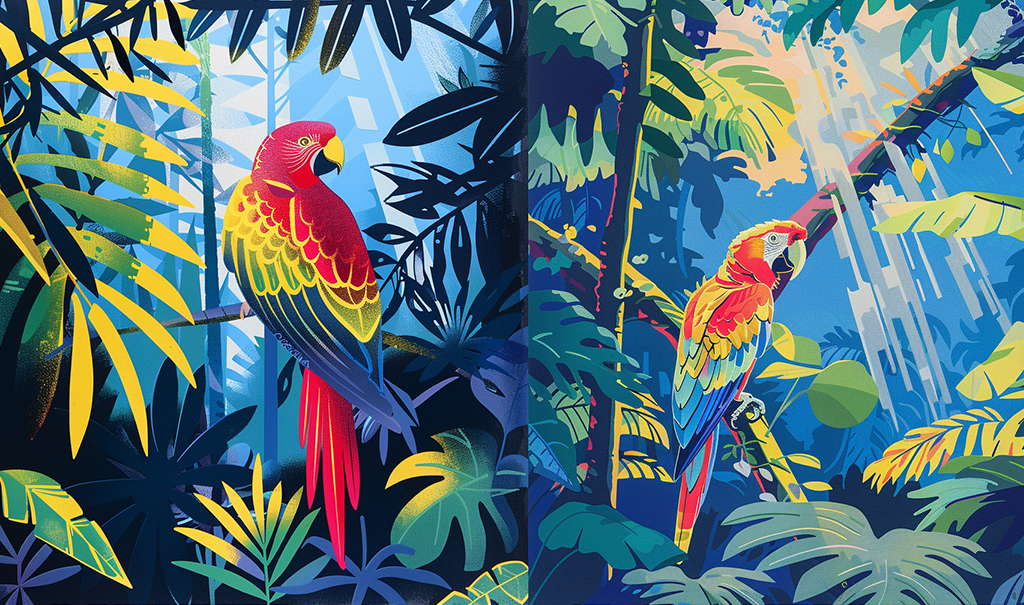
It’s Alive! Experiment at the Lab: Midjourney
Bold experimentation will always be the harbinger for great innovation. Well, that or at least that is the start of a hilarious viral video. Here in the labs of Mad Genius, we always have an eye on the future, looking for new technologies in video production, digital design, and more. In this blog one of our most gifted geniuses, Katie Tully, our art director, will offer her thoughts on AI image generation.
Take it away, Katie!
Getting Started
So here’s what I learned, attempting to create generative art with Midjourney. If this process had steps, this would be step one: read all the instructions. Yes, all of them. The second step, again, if this had steps, would be: know what a “Discord” is. If you don’t know what Discord is, go back to that first step.
Thankfully, the Midjourney team has compiled a rather extensive “how do I work this thing” list for any new users. Frankly, I would’ve been lost without it. As a daily Discord user, I had a good baseline understanding of Discord and its interface, which was a huge help. Those unfamiliar will probably need some time to learn Discord.
Unlike some other AI image generators I’ve heard of, Midjourney has multiple channels on Discord for users to prompt the AI from. You’ve got newbies, which is of course for those of us in its namesake and general channels. They also have a daily theme channel, which is actually pretty neat. There was some trial, but mostly error because I couldn’t figure out how to post in it. More than creating prompts and imagining themselves, simply watching prompts process in these channels in real time was fascinating. It can get a bit challenging to keep up when multiple users are prompting the same channel at the same time. I found that direct messaging the bot helped me not get lost in the flow of chatter. Once you get the basics of that, you’ll be off and running.
Midjourney has the user interact with the bot using a command. The /imagine command followed by a text description known as a “prompt” for the AI to generate an image from. Let’s just say you’ll have no shortage of options using Midjourney, as it then generates four options in a grid at 1024 x 1024 px. It gives options to re-run the prompt to generate another grid of images or choose an image to make variations from. Here’s a look at a couple of the prompts and the results.
Prompts and Results
Prompt One
I wanted to keep it simple with the first prompt, just to see what I would do, so I entered the following: "A bird in a tree."

Prompt Two
That first set of images wasn’t the worst work I’ve ever seen, but I wanted to see how in weeds I get and if Midjourney could keep up. The prompt was the following: "An illustration of a vibrant parrot perched on the limb of a verdant tree in a dense jungle. Blue gradient sky through the foliage, rays of sun casting on the forest floor, Risograph style, minimal shapes."

The generations from the prompts are pretty good, but they don’t get a perfect score just yet. To be fair, it also could be a bit of prompting error by a novice user. While I didn’t personally try to generate a photo realistic person, I have to admit Midjourney does get a high score in that regard.
A Few Thoughts
Testing Midjourney has been an interesting experiment. Since we paid for it for a month, I’ll finish my degree in perfect prompting. I barely have a grasp on the basics of the software itself, and I’m still figuring out how to write an A+ prompt. That’s really the name of the game here. The variety of parameters you can add to the end of your prompts can dial in the output even further. Things like aspect ratios, negative prompts (i.e. remove something from an image), randomly changing the style, tile for seamless patterns, and weird levels from 0-3000 are a few options worth testing out.
Midjourney isn’t the most user-friendly generative AI out there. Using the AI through Discord adds a second learning curve to the process. It’s difficult to imagine coupling that (how to use it) into our workflow. Then there’s the part where you’re prompted in the public channels. Everyone sees your prompt and result, which is daunting on its own. Not to mention, if you leave the channel for any reason, you’re going to turn into an archaeologist because you’ll be doing some digging. By the time you get back to look for your generations, you’ll have to sift through possibly hundreds of other prompts. Overall, an interesting experiment, you know, once you read the instructions. Read the instructions, people.
Best Use Case for Midjourney
Like I said, it was interesting, but I feel like generative AI is still in its novelty stage. One day, will it replace stock photo, illustration, and video subscriptions? Maybe, but definitely not yet. For now, it’s an “I have this idea in my head and can’t find a stock image or fill-in-the-blank to use as a reference image on a concept board” best use case. Moreover, Midjourney is for inspiration and mood board fodder. Commercial use cases for any generative AI are too legally “iffy” for me to ever be comfortable using completely AI-generated work for clients. That’s a problem for the future, which is a great thing. Because barring AI going all Skynet on us, we’ll all get to see how that changes.
Curious about using AI in your workflow? Are you a Midjourney disciple who would love to train Katie in the art of promptification? Fill out the contact form below and let's have a sincere conversation about artificial intelligence.